Ruixuan Liu
Renmin University of China
Prompt-to-Product: Generative Assembly via Bimanual Manipulation
Aug 28, 2025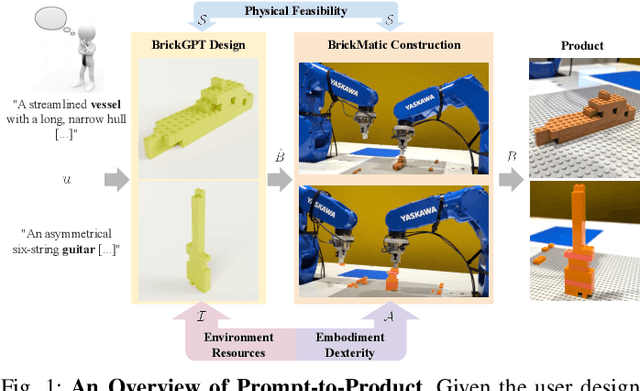
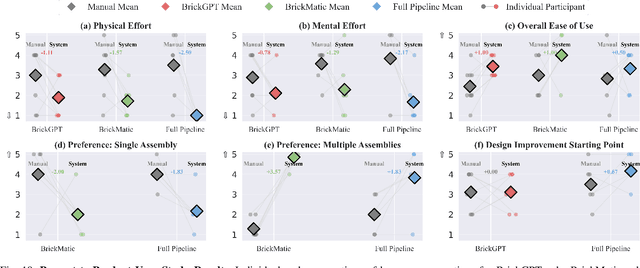
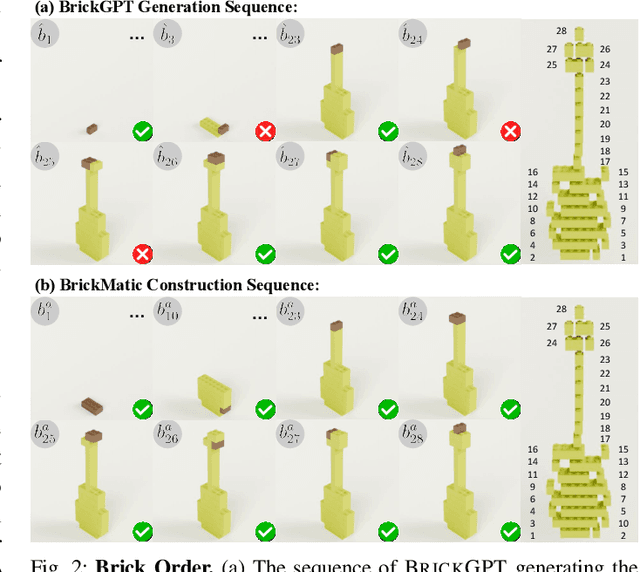

Abstract:Creating assembly products demands significant manual effort and expert knowledge in 1) designing the assembly and 2) constructing the product. This paper introduces Prompt-to-Product, an automated pipeline that generates real-world assembly products from natural language prompts. Specifically, we leverage LEGO bricks as the assembly platform and automate the process of creating brick assembly structures. Given the user design requirements, Prompt-to-Product generates physically buildable brick designs, and then leverages a bimanual robotic system to construct the real assembly products, bringing user imaginations into the real world. We conduct a comprehensive user study, and the results demonstrate that Prompt-to-Product significantly lowers the barrier and reduces manual effort in creating assembly products from imaginative ideas.
NeSyPack: A Neuro-Symbolic Framework for Bimanual Logistics Packing
Jun 06, 2025Abstract:This paper presents NeSyPack, a neuro-symbolic framework for bimanual logistics packing. NeSyPack combines data-driven models and symbolic reasoning to build an explainable hierarchical system that is generalizable, data-efficient, and reliable. It decomposes a task into subtasks via hierarchical reasoning, and further into atomic skills managed by a symbolic skill graph. The graph selects skill parameters, robot configurations, and task-specific control strategies for execution. This modular design enables robustness, adaptability, and efficient reuse - outperforming end-to-end models that require large-scale retraining. Using NeSyPack, our team won the First Prize in the What Bimanuals Can Do (WBCD) competition at the 2025 IEEE International Conference on Robotics and Automation.
Generating Physically Stable and Buildable LEGO Designs from Text
May 08, 2025Abstract:We introduce LegoGPT, the first approach for generating physically stable LEGO brick models from text prompts. To achieve this, we construct a large-scale, physically stable dataset of LEGO designs, along with their associated captions, and train an autoregressive large language model to predict the next brick to add via next-token prediction. To improve the stability of the resulting designs, we employ an efficient validity check and physics-aware rollback during autoregressive inference, which prunes infeasible token predictions using physics laws and assembly constraints. Our experiments show that LegoGPT produces stable, diverse, and aesthetically pleasing LEGO designs that align closely with the input text prompts. We also develop a text-based LEGO texturing method to generate colored and textured designs. We show that our designs can be assembled manually by humans and automatically by robotic arms. We also release our new dataset, StableText2Lego, containing over 47,000 LEGO structures of over 28,000 unique 3D objects accompanied by detailed captions, along with our code and models at the project website: https://avalovelace1.github.io/LegoGPT/.
APEX-MR: Multi-Robot Asynchronous Planning and Execution for Cooperative Assembly
Mar 20, 2025Abstract:Compared to a single-robot workstation, a multi-robot system offers several advantages: 1) it expands the system's workspace, 2) improves task efficiency, and more importantly, 3) enables robots to achieve significantly more complex and dexterous tasks, such as cooperative assembly. However, coordinating the tasks and motions of multiple robots is challenging due to issues, e.g. system uncertainty, task efficiency, algorithm scalability, and safety concerns. To address these challenges, this paper studies multi-robot coordination and proposes APEX-MR, an asynchronous planning and execution framework designed to safely and efficiently coordinate multiple robots to achieve cooperative assembly, e.g. LEGO assembly. In particular, APEX-MR provides a systematic approach to post-process multi-robot tasks and motion plans to enable robust asynchronous execution under uncertainty. Experimental results demonstrate that APEX-MR can significantly speed up the execution time of many long-horizon LEGO assembly tasks by 48% compared to sequential planning and 36% compared to synchronous planning on average. To further demonstrate the performance, we deploy APEX-MR to a dual-arm system to perform physical LEGO assembly. To our knowledge, this is the first robotic system capable of performing customized LEGO assembly using commercial LEGO bricks. The experiment results demonstrate that the dual-arm system, with APEX-MR, can safely coordinate robot motions, efficiently collaborate, and construct complex LEGO structures. Our project website is available at https://intelligent-control-lab.github.io/APEX-MR/
Eye-in-Finger: Smart Fingers for Delicate Assembly and Disassembly of LEGO
Mar 10, 2025Abstract:Manipulation and insertion of small and tight-toleranced objects in robotic assembly remain a critical challenge for vision-based robotics systems due to the required precision and cluttered environment. Conventional global or wrist-mounted cameras often suffer from occlusions when either assembling or disassembling from an existing structure. To address the challenge, this paper introduces "Eye-in-Finger", a novel tool design approach that enhances robotic manipulation by embedding low-cost, high-resolution perception directly at the tool tip. We validate our approach using LEGO assembly and disassembly tasks, which require the robot to manipulate in a cluttered environment and achieve sub-millimeter accuracy and robust error correction due to the tight tolerances. Experimental results demonstrate that our proposed system enables real-time, fine corrections to alignment error, increasing the tolerance of calibration error from 0.4mm to up to 2.0mm for the LEGO manipulation robot.
Tokens for Learning, Tokens for Unlearning: Mitigating Membership Inference Attacks in Large Language Models via Dual-Purpose Training
Feb 27, 2025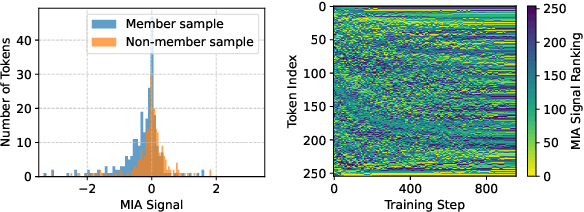
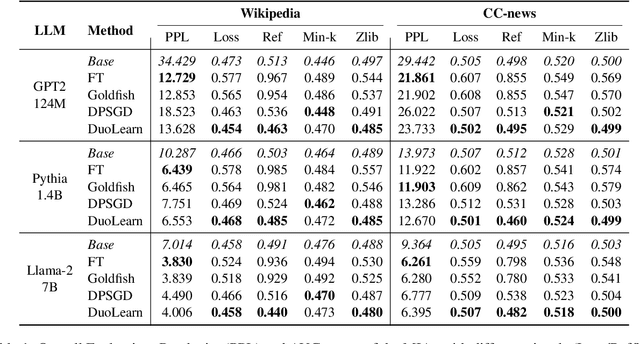
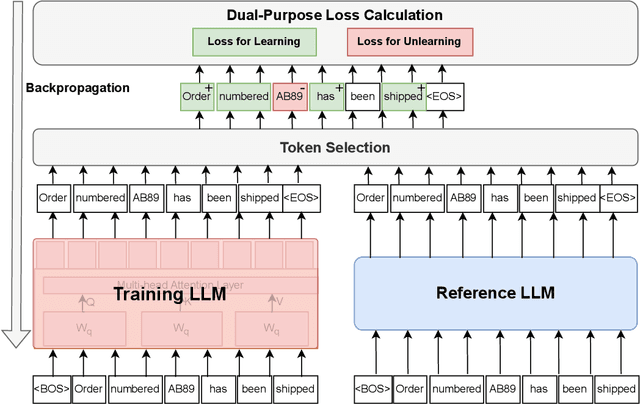

Abstract:Large language models (LLMs) have become the backbone of modern natural language processing but pose privacy concerns about leaking sensitive training data. Membership inference attacks (MIAs), which aim to infer whether a sample is included in a model's training dataset, can serve as a foundation for broader privacy threats. Existing defenses designed for traditional classification models do not account for the sequential nature of text data. As a result, they either require significant computational resources or fail to effectively mitigate privacy risks in LLMs. In this work, we propose a lightweight yet effective empirical privacy defense for protecting training data of language modeling by leveraging the token-specific characteristics. By analyzing token dynamics during training, we propose a token selection strategy that categorizes tokens into hard tokens for learning and memorized tokens for unlearning. Subsequently, our training-phase defense optimizes a novel dual-purpose token-level loss to achieve a Pareto-optimal balance between utility and privacy. Extensive experiments demonstrate that our approach not only provides strong protection against MIAs but also improves language modeling performance by around 10\% across various LLM architectures and datasets compared to the baselines.
Semiparametric Bayesian Difference-in-Differences
Dec 05, 2024


Abstract:This paper studies semiparametric Bayesian inference for the average treatment effect on the treated (ATT) within the difference-in-differences research design. We propose two new Bayesian methods with frequentist validity. The first one places a standard Gaussian process prior on the conditional mean function of the control group. We obtain asymptotic equivalence of our Bayesian estimator and an efficient frequentist estimator by establishing a semiparametric Bernstein-von Mises (BvM) theorem. The second method is a double robust Bayesian procedure that adjusts the prior distribution of the conditional mean function and subsequently corrects the posterior distribution of the resulting ATT. We establish a semiparametric BvM result under double robust smoothness conditions; i.e., the lack of smoothness of conditional mean functions can be compensated by high regularity of the propensity score, and vice versa. Monte Carlo simulations and an empirical application demonstrate that the proposed Bayesian DiD methods exhibit strong finite-sample performance compared to existing frequentist methods. Finally, we outline an extension to difference-in-differences with multiple periods and staggered entry.
Robustifying Long-term Human-Robot Collaboration through a Hierarchical and Multimodal Framework
Nov 24, 2024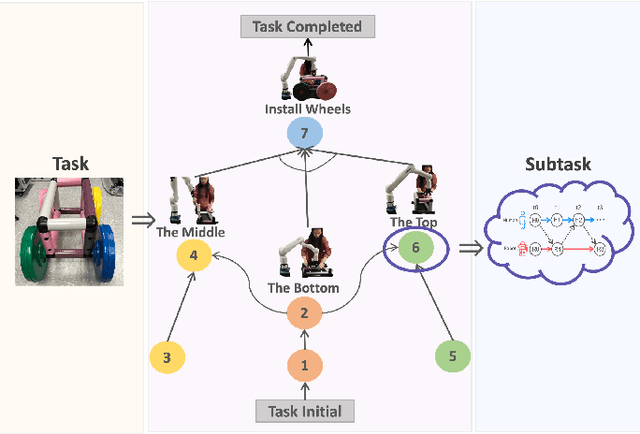
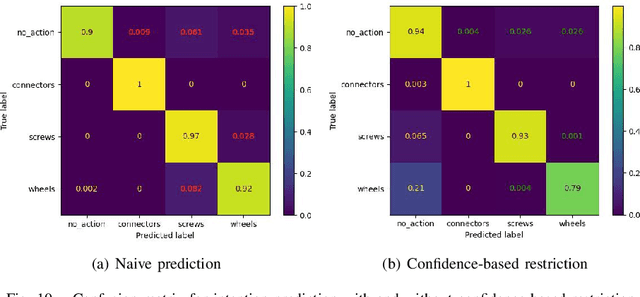
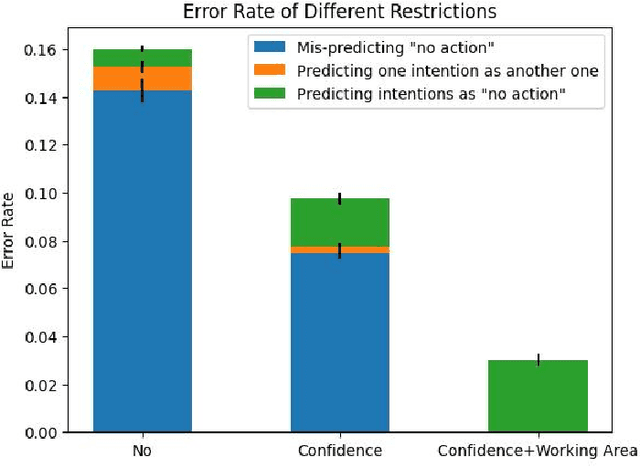
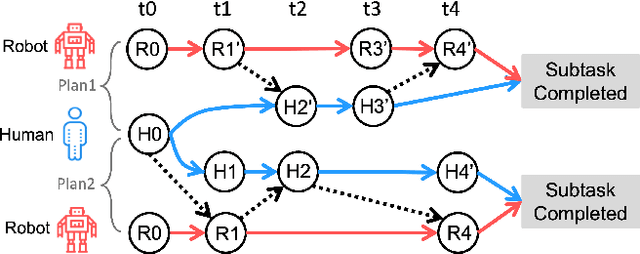
Abstract:Long-term Human-Robot Collaboration (HRC) is crucial for developing flexible manufacturing systems and for integrating companion robots into daily human environments over extended periods. However, sustaining such collaborations requires overcoming challenges such as accurately understanding human intentions, maintaining robustness in noisy and dynamic environments, and adapting to diverse user behaviors. This paper presents a novel multimodal and hierarchical framework to address these challenges, facilitating efficient and robust long-term HRC. In particular, the proposed multimodal framework integrates visual observations with speech commands, which enables intuitive, natural, and flexible interactions between humans and robots. Additionally, our hierarchical approach for human detection and intention prediction significantly enhances the system's robustness, allowing robots to better understand human behaviors. The proactive understanding enables robots to take timely and appropriate actions based on predicted human intentions. We deploy the proposed multimodal hierarchical framework to the KINOVA GEN3 robot and conduct extensive user studies on real-world long-term HRC experiments. The results demonstrate that our approach effectively improves the system efficiency, flexibility, and adaptability in long-term HRC, showcasing the framework's potential to significantly improve the way humans and robots work together.
Technical Report for Soccernet 2023 -- Dense Video Captioning
Oct 31, 2024


Abstract:In the task of dense video captioning of Soccernet dataset, we propose to generate a video caption of each soccer action and locate the timestamp of the caption. Firstly, we apply Blip as our video caption framework to generate video captions. Then we locate the timestamp by using (1) multi-size sliding windows (2) temporal proposal generation and (3) proposal classification.
Automating Robot Failure Recovery Using Vision-Language Models With Optimized Prompts
Sep 06, 2024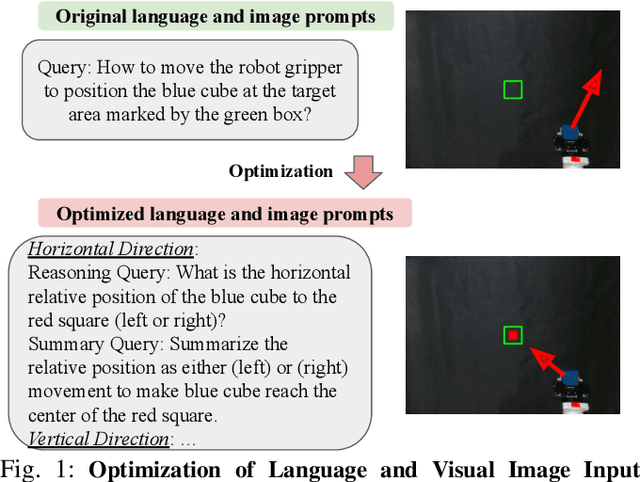
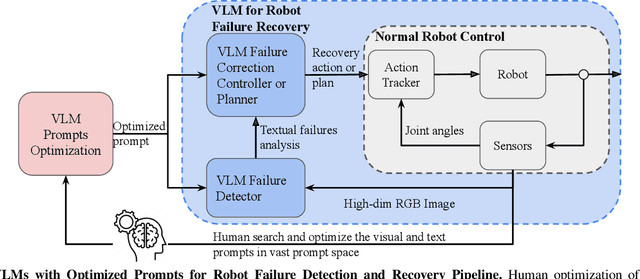
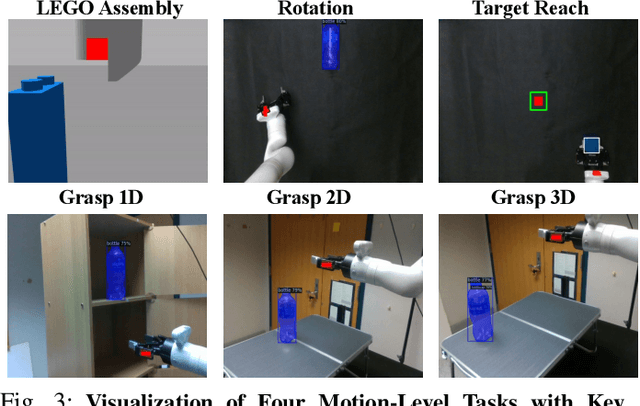
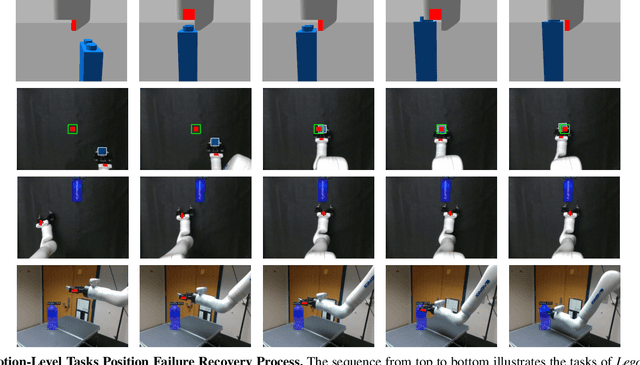
Abstract:Current robot autonomy struggles to operate beyond the assumed Operational Design Domain (ODD), the specific set of conditions and environments in which the system is designed to function, while the real-world is rife with uncertainties that may lead to failures. Automating recovery remains a significant challenge. Traditional methods often rely on human intervention to manually address failures or require exhaustive enumeration of failure cases and the design of specific recovery policies for each scenario, both of which are labor-intensive. Foundational Vision-Language Models (VLMs), which demonstrate remarkable common-sense generalization and reasoning capabilities, have broader, potentially unbounded ODDs. However, limitations in spatial reasoning continue to be a common challenge for many VLMs when applied to robot control and motion-level error recovery. In this paper, we investigate how optimizing visual and text prompts can enhance the spatial reasoning of VLMs, enabling them to function effectively as black-box controllers for both motion-level position correction and task-level recovery from unknown failures. Specifically, the optimizations include identifying key visual elements in visual prompts, highlighting these elements in text prompts for querying, and decomposing the reasoning process for failure detection and control generation. In experiments, prompt optimizations significantly outperform pre-trained Vision-Language-Action Models in correcting motion-level position errors and improve accuracy by 65.78% compared to VLMs with unoptimized prompts. Additionally, for task-level failures, optimized prompts enhanced the success rate by 5.8%, 5.8%, and 7.5% in VLMs' abilities to detect failures, analyze issues, and generate recovery plans, respectively, across a wide range of unknown errors in Lego assembly.
 Add to Chrome
Add to Chrome Add to Firefox
Add to Firefox Add to Edge
Add to Edge